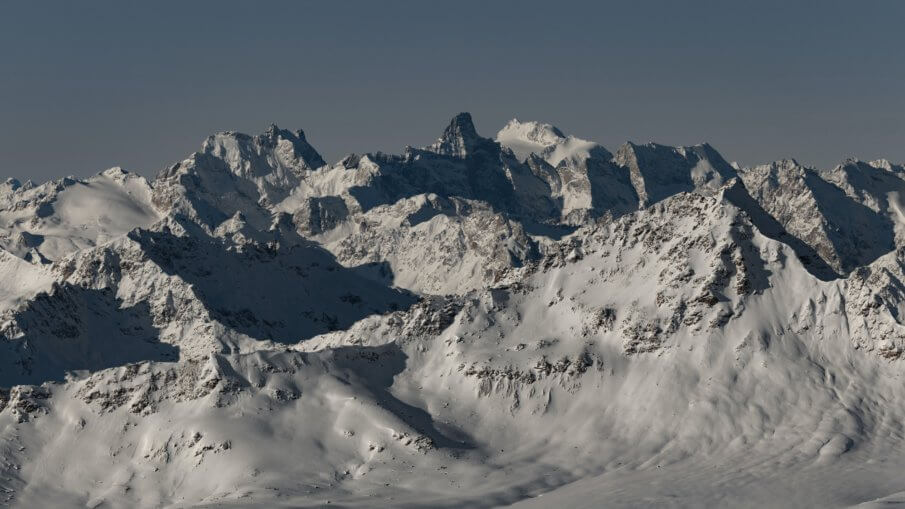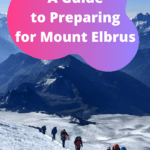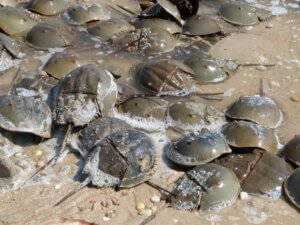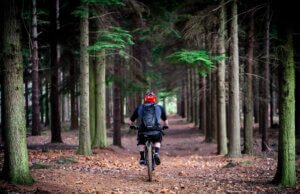*This post contains affiliate links, if you click a link I make a small commission and you help support the blog
Is hiking the 7 summits on your adventure bucket list? Mount Elbrus is one of the disputed of the 7 summits. Should it be on the list or not? Even if it doesn’t make the cut Mount Elbrus is still a formidable high altitude mountain and a challenge for any hiker.
A Mount Elbrus climb is on my list and I was supposed to climb it a while back but circumstances changed. However, I have taken the time to do the prep work for what I am certain will be an unforgettable experience. This post will help you plan your trip up Europe’s highest mountain.
What are the 7 Summits?
The seven summits are the 7 highest peaks on each continent. To achieve the challenge of summiting all the seven summits, most people go based on either the Bass or the Messner lists. The only difference in the two lists is what they feel is the highest peak on the Australian continent.
The Bass list includes:
- North America – Denali (6,194 m/20,322 ft)
- South America – Aconcagua (6,961 m/22,838 ft)
- Africa – Kilimanjaro (5,895 m/19,341 ft)
- Asia – Mount Everest (8,848 m/29,029 ft)
- Europe – Mount Elbrus (5,642 m/18,510 ft)
- Antarctica – Mount Vinson (4,892 m/16,050 ft)
- Australia – Mount Kosciuszko (2,228 m/7,310 ft)
The Messner list is the same with Puncak Jaya (4,884 m/16,024 ft) replacing Mount Kosciuszko, which is in Indonesia, not mainland Australia. Also, most mountaineers also climb Mont Blanc in Europe as well. There is some debate over Europe’s highest peak because of the location of Mount Elbrus. But it is included in both the original lists.
Mount Elbrus Facts
Located in the Caucasus Mountains in Russia, this volcanic mountain technically has two summits. A western summit (5,642 m/18,510 vertical feet) and an eastern summit (5,621 m/18,442 ft).
There are two main routes, the “Normal Route” which is thought to be the easiest, safest, and fastest route and includes a chairlift at the beginning. The lift runs from 9am to 3pm. The longer route is the “Kiukurtliu Route,” which starts below the cable car system.
From there you can take the north or the south route to the summit. Heading from the north is more remote and is more technical than the route from the south. The success rate for this mountain is between 80-90%, which is really quite high, so if this is your first time climbing a big mountain, it’s not a bad one to start with.
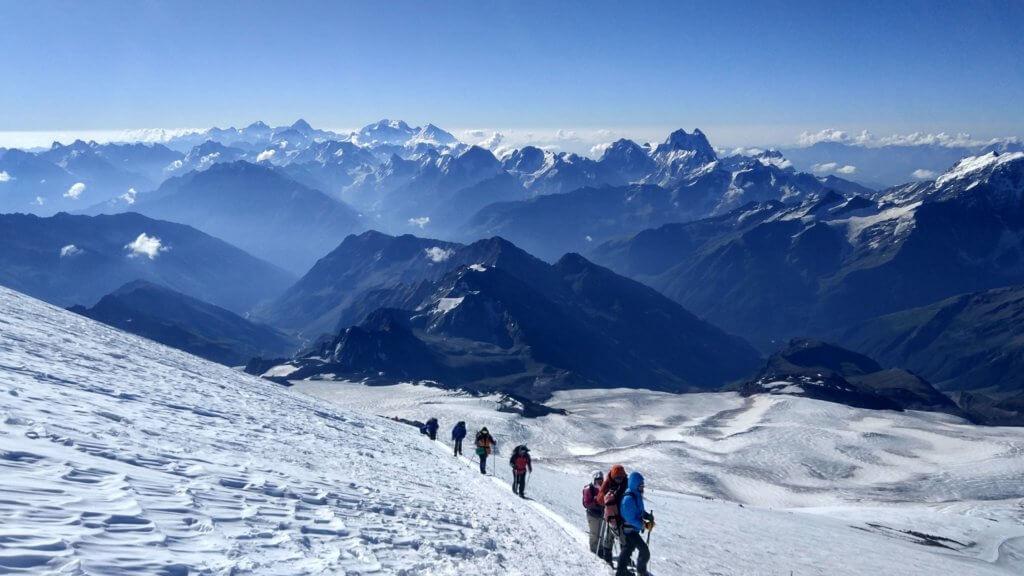
Fun Fact: Mount Elbrus is thought to be home of world’s worst outhouse and is close to being the highest toilet in Europe.
Permits and Visas
You are required to get a Russian visa for this trek. It requires sending your passport to a Russian embassy or Russian visa center in your respective country. You will apply for a tourist visa, which lasts for 3 years and allows for multiple entries in the country.
Check the visa center closest to you to arrange for your visa. Make sure to begin the process at least 3 months in advance to ensure you receive your visa in a timely manner.
Traveling logistics
I cannot stress enough that for travel such as this you should always purchase travel insurance. For a trip like this, you need to think about additional coverage such as air lift out if you get injured or severe altitude sickness. You do not want to be up on a mountain, with very little rescue services, with no way to get help. Rescues on these mountains are very costly and having travel insurance will make a big difference.
The trekking company you go with will recommend where to fly into, how far in advance and give you some direction on times to arrive by.
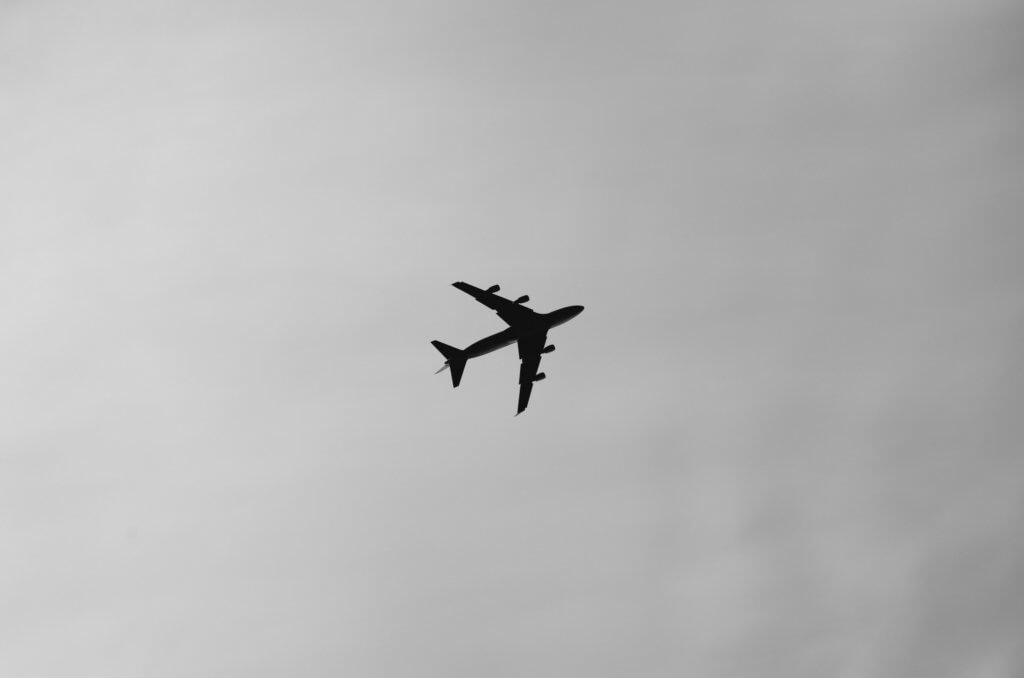
You will fly into Mineralnye Vody Airport, with the best connections from Moscow and St Petersburg. From there it’s a several hour drive to your starting point.
Follow the guidance of the trekking company, they know what they are doing.
Picking a trekking company
There are lots of options when it comes to trekking groups for Mount Elbrus. If you are interested in an all women outdoor trek, check out WHOA ($3,900), this is the company I will be trekking with. They provide you with guidance and everything you need to prepare for your trip.
Other companies include RMI expeditions ($5,300) and Alpine Ascents ($5,950.00). I would recommend working with trekking companies who employ local partners. So often we go on these trips with big companies and the local people don’t see a dime of the money we put in. To make this a sustainable thing, we need to include the local people. Many tour companies will have information on this on their website.
Best time to go
The best months of year to climb is between June to mid-September, though you can have bad weather at any time with high winds and blizzard conditions, late summer is a great time to go.
Preparing for the climb
Climbing the mountain is one thing, but to have a success climb you need to be prepared before hand. You need to think about scenarios like, what if you get altitude sickness. What will you do? Will you need to head to lower elevations, effectively ending your summit bid? How could you mitigate some of these risks ahead of time? The best way is to have a plan and a training program.
You can get altitude sickness medication from your doctor or a travel clinic, but be aware that these pills have their own side effects that aren’t pleasant and often you need to start taking them before you get into those elevations for them to be the most effective. Some ways to help stave off altitude sickness is by listening to your body at higher altitudes. Getting fit before your climb, drinking water regularly throughout the trek, and doing an acclimatization hike (which all companies will do multiple hikes for safety and to prepare your body for those higher elevations). All these things help, they don’t make the risk zero, but they can certainly make the difference.
What to bring
This trek can have extreme weather conditions and is no joke and you need to be prepared with the right gear. Most of the travel companies have extensive gear lists to help you get ready for your ascent.
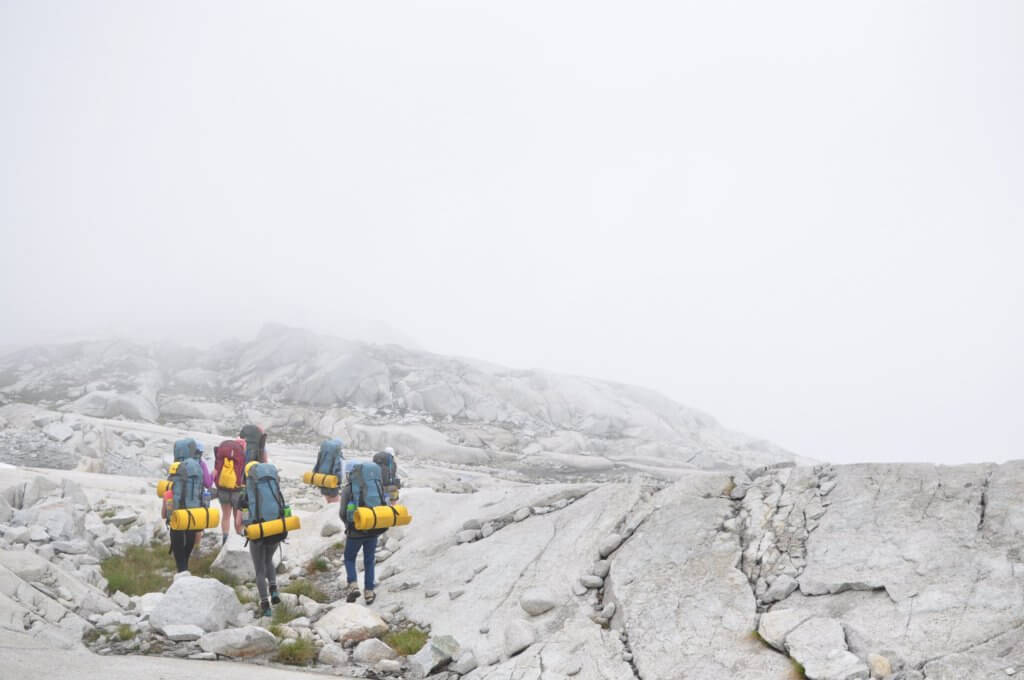
Don’t skimp out on the gear. Having good gear, like a cold weather rated sleeping bag and a high down count jacket, is what will make or break your climb. Though I should also mention that many of these companies will also rent out certain gear (like crampons and an ice axe) if you don’t want to purchase them.
What to expect
It’s a good idea to go through what the trip will look like from day to day so you can mentally prepare yourself for the days ahead as well as have the right gear for each day. Elbrus is a bit unique in that a cable car that takes you to 3900 meters and a base camp of huts to stay in. You can choose to climb in 7, 9, or 12 days, depending on how much time you think you will need for acclimation and honestly, the longer hikes give you more time to enjoy the mountain. It’s a steep slope and you want to give yourself the best chance to reach the top on summit day.
Check out this example of a 12-day itinerary with Ian Taylor trekking.
Concluding Thoughts
The 7 summits are a serious bucket list item for some. The famous response to why any mountaineer ever wanted to climb these mountains is, “Because they are there.” Once you start, you catch the bug and get swept up in the excitement of doing something few others have done.
Mount Elbrus is also considered one of the easier of the 7 summits and a good option for your first mountain. And if you’re getting prepared to climb mountains make sure to check out my first climb up Mount Katahdin, the highest mountain in Maine.
